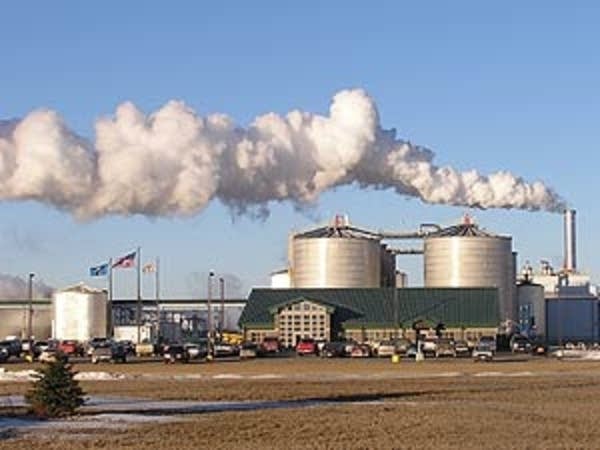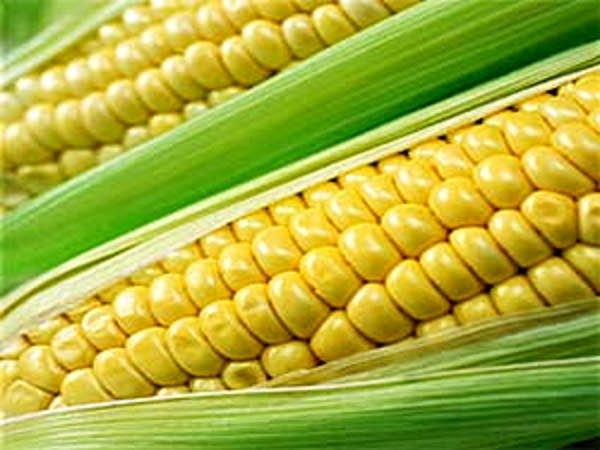EPA tests the 'green' value of ethanol

For years, ethanol has been touted as a solution to the greenhouse gases that cause global warming. But the EPA is looking at whether ethanol lives up to that reputation.
If the agency decides against ethanol, the ruling could have a major impact on tens of thousands of people in rural Minnesota.
In most cases, ethanol does fine on the greenhouse gas test. It beats gasoline when it comes to tailpipe emissions. Even if you add in the pollution from growing corn -- truck, tractor fumes and the rest, it still scores better.
But if you look one step closer, ethanol gets into trouble -- over land use issues. When corn becomes ethanol instead of food, new cropland must be planted to maintain the food supply.
Create a More Connected Minnesota
MPR News is your trusted resource for the news you need. With your support, MPR News brings accessible, courageous journalism and authentic conversation to everyone - free of paywalls and barriers. Your gift makes a difference.

Purdue University's Wally Tyner says preparing that new land puts out greenhouse gases.
"When you cut down a tree or plow under a grassland, you immediately release carbon into the atmosphere," said Tyner.
Tyner says the trees are often burned, releasing clouds of greenhouse gases. But Tyner says even the simple act of plowing the soil and exposing it to air oxidizes carbon and sends it skyward.
"That's the key point of contention, this land use change issue," said Tyner.
Tyner found this land conversion process reduces ethanol's environmental advantage over gasoline. When this factor is included, at worst, ethanol is no better than gasoline, and at best it produces about 20 percent less greenhouse gas.
The last figure, 20 percent, is important. In 2007, Congress required that ethanol must be 20 percent better than gasoline in greenhouse gas emissions, or face financial consequences.
"It would be a huge public relations nightmare."
The EPA is mum on what its analysis shows. But the agency has been consulting with Purdue's Wally Tyner and other experts in the field. Tyner says the scientists have picked up hints about what the EPA is thinking.
"The rumor mill is that for corn, they're finding that it's marginal at best -- meaning that it may or not meet the standard," said Tyner.
A number of things could happen if ethanol fails to make the 20 percent threshold.
"It would be a huge public relations nightmare, and really a big setback to all of our renewable fuels efforts," said Rick Tolman, CEO of the National Corn Growers Association, a strong ethanol backer.
Tolman says an unfavorable EPA ruling on greenhouse gases would hurt the fuel, but he doubts the agency will reach that conclusion.
"It's hard to imagine them doing it based on the science. But if that did happen it would be very devastating," said Tolman.
An EPA decision against ethanol could harm the fuel's reputation as environmentally safe, and reduce sales. Minnesota's ethanol industry would share the hurt.
The state's 19 operating ethanol plants employ nearly 1,000 workers and buy more than $1 billion worth of corn a year, mainly from Minnesota farmers.
Rick Tolman of the Corn Growers Association says there are studies favorable to corn ethanol which show the fuel can pass the land use test. He hopes the EPA won't buy the argument that ethanol forces new cropland into production.
"When they look at all the body of evidence they'll come back and say, 'Well, there's maybe a little bit of an impact,' Or, nothing," Tolman said.
The corn growers have been firing off letters of complaint to scientists who publish findings unfavorable to corn ethanol. One letter went to the University of Minnesota's Jason Hill.
Hill says a recent study he helped with shows corn ethanol will have a difficult time meeting the EPA's greenhouse gas standard.
"Our paper was not by any means to come down on ethanol," said Hill. "But we need to be sure that if there are better options out there, that we're taking advantage of them."
Those options include cellulosic ethanol, which is made from other plant sources such as crop waste, grasses or wood chips. In most studies it easily passes the EPA's greenhouse gases test. But no one's figured out yet how to make money on that fuel.
